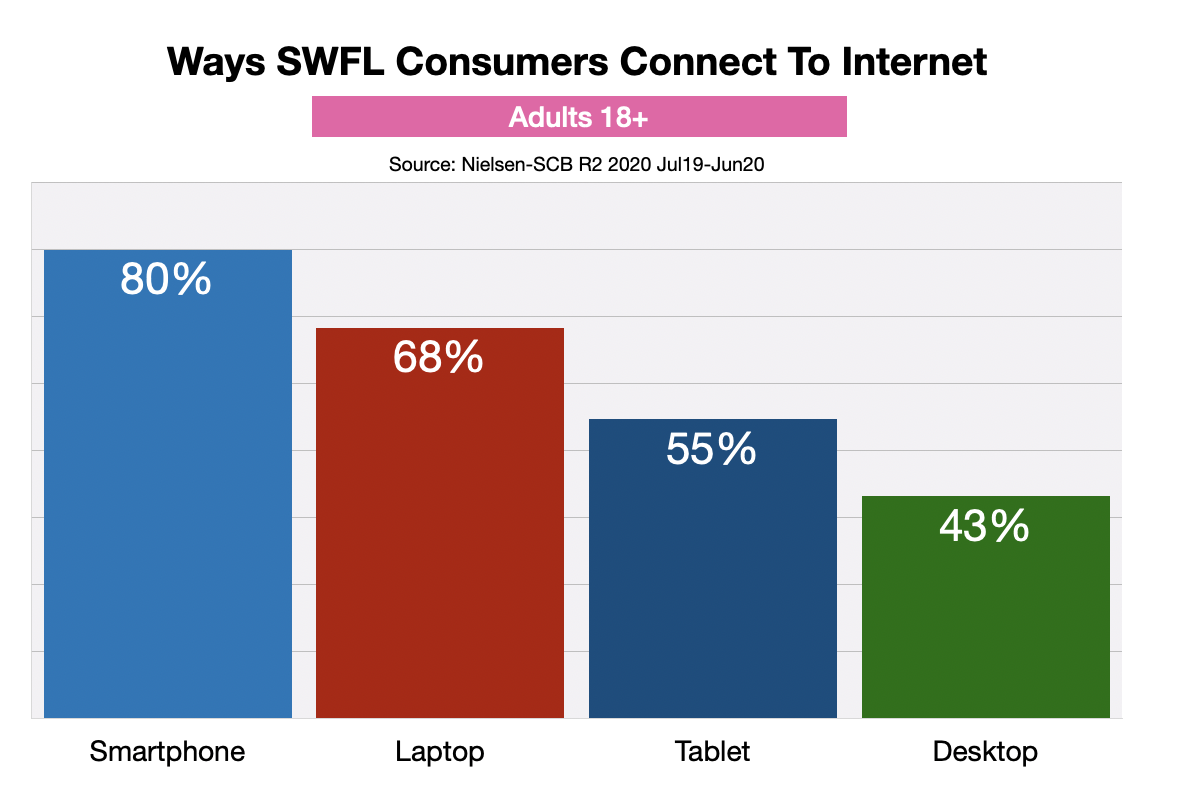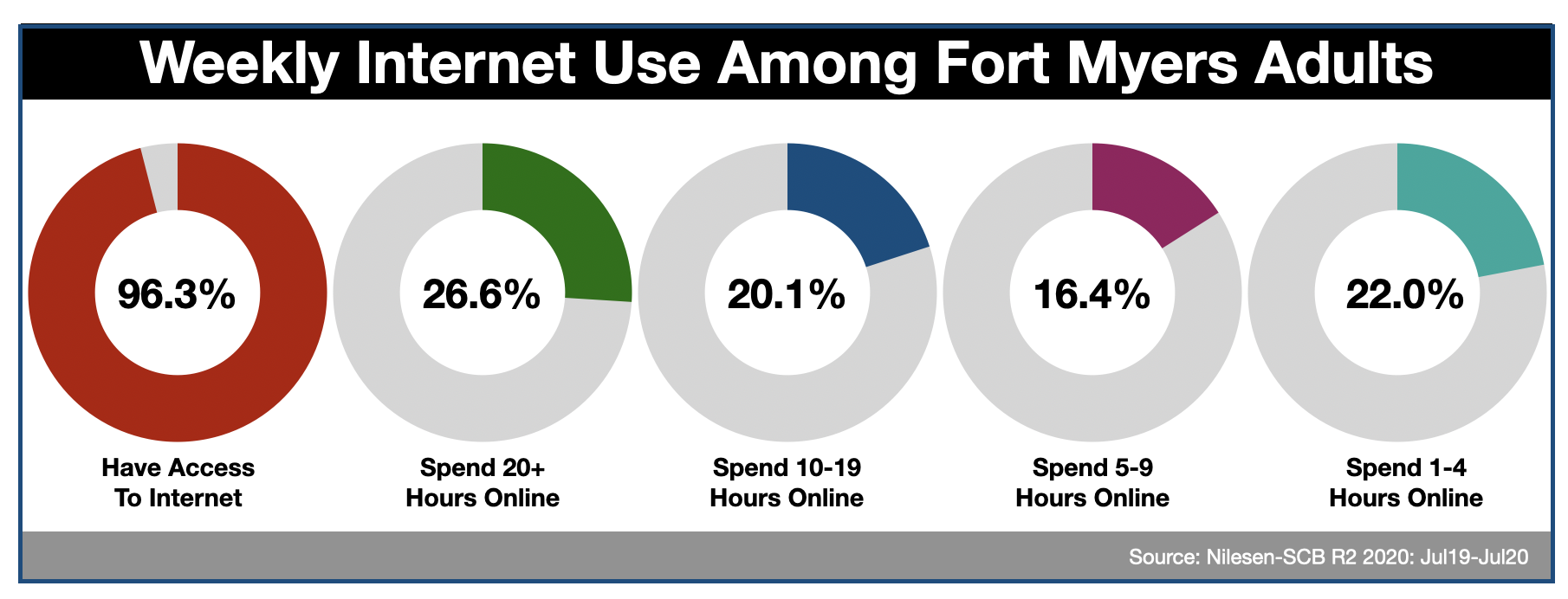 Southwest Florida business owners are expected to invest $265-million during 2021 to advertise to consumers connected to the internet. This forecast was produced by Borrell Associates, a company that tracks business advertising expenditures across the country.
Southwest Florida business owners are expected to invest $265-million during 2021 to advertise to consumers connected to the internet. This forecast was produced by Borrell Associates, a company that tracks business advertising expenditures across the country.
These online marketing dollars will be spent on banner advertising, search engine marketing, email, as well as audio and video advertising. This is all to capture the attention of shoppers and buyers as they go about their connected days.
According to Nielsen, 96.3% of adult consumers in the Fort Myers-Naples area have access to the internet. They connect, primarily, with desktop and laptop computers; smartphones; or tablets.
Ninety-six percent of SWFL adults spend at least one hour per week online, with most spending at least 10 hours connected.
So, what are Fort Myers adults doing while they are online each month?
Social media is the number one activity followed by watching video content, checking the weather, listening to streaming audio, and online banking.
It's important to note that almost 89% of all video content streamed by SWFL consumers is Over-The-Top-Television (OTT).
OTT, which is sometimes called connected-TV or CTV, consists of streaming services like Netflix, Hulu, Amazon Prime, and Disney Plus that provide long-form entertainment content similar to traditional television. The difference being, OTT is not delivered over the air or by cable. OTT programming can only be accessed via the internet using a computer, smartphone, tablet, smart-TV, game console, or an accessory like a Roku or Amazon Fire Stick.

Of course, the primary reason why so many Fort Myers small business owners and retailers advertise online is to reach consumers while they are in the process of shopping.
According to Nielsen, 73.9% of SWFL adults bought a product online during the past six months. Throughout 2020, these purchases totaled $2.9-billion. This amount is based on projections from eMarketer and represents a 32.4% increase versus 2019.
“We’ve seen e-commerce accelerate in ways that didn’t seem possible last spring, given the extent of the economic crisis,” said Andrew Lipsman, eMarketer principal analyst at Insider Intelligence. “While much of the shift has been led by essential categories like grocery, there has been surprising strength in discretionary categories like consumer electronics and home furnishings that benefited from pandemic-driven lifestyle needs.”
As the pandemic drags on, more and more consumers are shopping online.
During the past week, says Nielsen, 67% of all consumers shopped online. This compares to just 46% pre-pandemic. Most remarkably, just over 1/3 of all digital shoppers last week were brand-new users.
Furthermore, according to Nielsen, 23% of all consumers now shop online multiple times per week.






